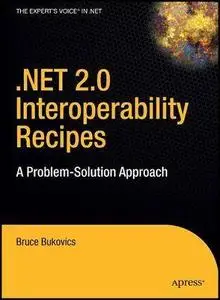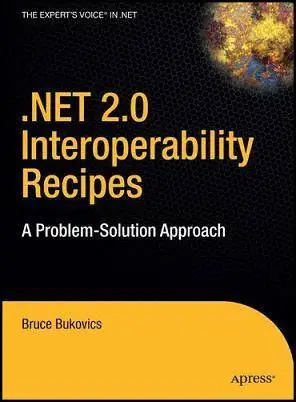Bruce Bukovics | ".NET 2.0 Interoperability Recipes"
Apress | Mar 2006 | ISBN: 1590596692 | English | Pages: 631 | PDF | Size : 1.5 MB (book + source code)
This book is appropriate for any .NET developer who needs to interoperate between .NET code and non-.NET Windows code. You may be an experienced .NET developer who has never had the need to interoperate with native code before. Or you may be completely new to .NET and are just learning the languages and class libraries associated with .NET. In either case, this book is for you.
Most of the examples in this book are presented in both C# and Visual Basic .NET (VB.NET). You will be able to understand the examples as long as you know one of these languages. But this book isn’t designed to teach you alanguage. Likewise, you should already be familiar with the basics of the .NET Framework Class Library (FCL). You don’t have to be aguru, but you should at least know the basics.
Since the book is all about interop with existing code, the examples also typically use one ormore native Windows languages. For example, the chapters covering the use of C-style functions use examples written in native C++ code. The chapter that focuses on the use of COM components presents Visual Basic 6.0 (VB6) and C++ ATL example components that are used by .NET client code. These same native languages are later used as client code when managed classes are exposed to COM.
While unmanaged code is used extensively in the examples, it is not the primary focus of this book. So if you know VB6 but don’t know C++, that’s OK—you’ll still benefit from the examples. Most of the .NET code works the same way regardless of the unmanaged language used. If there are differences, they are noted in the examples.
Likewise, the chapters covering COM and COM+ assume that you are already familiar with these technologies. This is not abook about learning COM and COM+, but it will show you how to use COM and COM+ from .NET.
TABLE OF CONTENT:
Chapter 1 - Using C-Style APIs
Chapter 2 - C-Style APIs
Chapter 3 - Win32 API
Chapter 4 - Using C++ Interop
Chapter 5 - Using COM
Chapter 6 - Exposing Managed Code to COM
Chapter 7 - Marshaling to COM Clients
Chapter 8 - COM+ Enterprise Services
Chapter 9 - COM+ Enterprise Services Transactions



